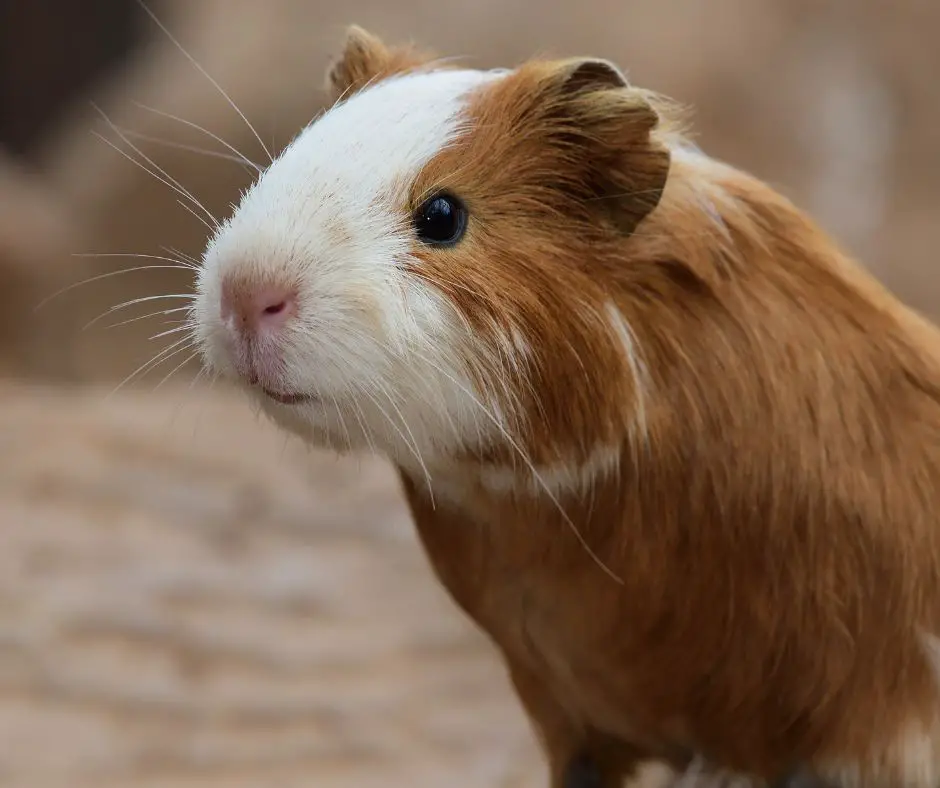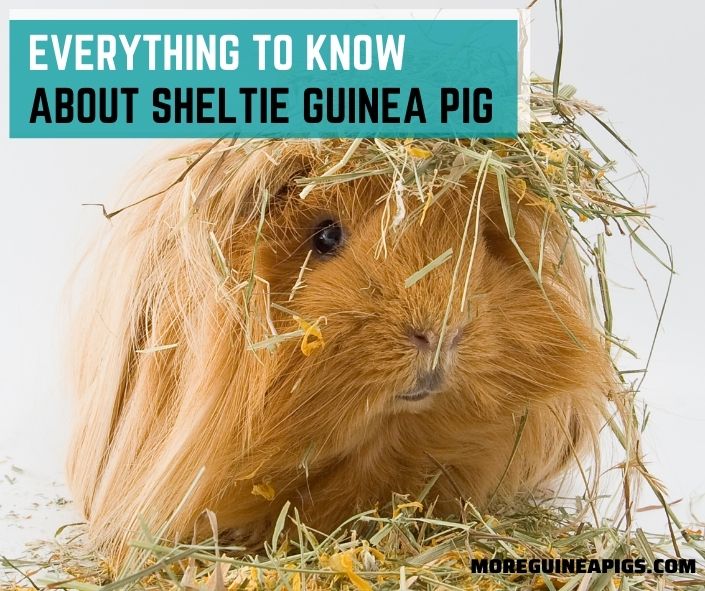Can Guinea Pigs See Color?
Does your guinea pig respond to different colors in your household? Well, you must be eager to know if your guinea pigs are excited about certain colors.
Guinea pigs are prey animals, and they use eyesight to distinguish different colors of things so that they can survive and maneuver, that is, for food and to escape danger from predators.
Are they capable of differentiating bright and dull colors? This article gives an insight into whether guinea pigs can see colors and what colors they can see. Read through for more enlightenment about guinea pig color vision.
Can Guinea Pigs See Color?
Yes, guinea pigs see colors since they are not colourblind, as some people think. They can distinguish various colors from dull to bright colors, for instance, green, black, white, red, brown.
The reason is that guinea pigs have a dichromatic color vision in nature, which makes them see and respond to different colors accurately, even if not 100% authentic.
Guinea pigs have a color vision of finite type and possess only two types of cone cells and one photoreceptor cell.

Are Guinea Pigs Sensitive to Colors?
Yes, guinea pigs are sensitive to bright or dull colors. They can perceive and discern multiple colors with clarity.
Guinea pigs possess rod cells with a peak sensitivity of approximately 494 nm. This makes them sensitive to colors. They are sensitive to green colors and highly sensitive to red colors.
In addition, guinea pig eyes have three classes of photopigments: two cone photopigments and a rod pigment. And this enhances their vision for an array of colors.
Why Do Scientists Think Guinea Pigs Have Poor Eyesight?
According to the scientists, guinea pigs show low hyperopia. For simplicity, hyperopia is a vision condition defining an animal with the ability to see distant objects clearly, but something nearby appears blurry to them.
Likewise, the shape of the guinea pig cornea induces a positive spherical aberration (SA), hence, the reason for image blur.
Positive SA explains rays that bent too much from the eye lens, affecting the guinea pig capacity to focus clearly. Poor eyesight is associated with difficulty with depth perception.
This makes guinea pigs have limited vision and see a blurred vision for things over longer distances. Moreover, guinea pigs’ inability to discriminate between red and green colors propelled scientists to infer they lack color vision.

Do Guinea Pigs Recognize Their Owners?
Yes, guinea pigs do recognize their owners. They are social, friendly, and very interactive animals that enjoy human companions.
They can use their eyes to associate their owners with certain events, such as when you approach them with food, treats and even threats or fear when you mishandled them.
That said, they must form mutual bonds and gain the trust of their owners to decisively acknowledge and answer to their owners by eyesight cues and use of other senses like scent and sound.
What Does Guinea Pig Vision Look Like?
Guinea pigs have particular characteristics for their eyesight, making them see colors in broad daylight and even at night. They rely on eyesight cues to recognize and distinguish different colors.
They need light to see objects even while in the dark. It’s a process that happens in a flashlight where light passes through the eyes and is then forwarded to the back of the eye.
Receptors transfer colors seen via the optic nerve to the brain, process the color and identify it. For more details about guinea pig vision, check out below:
Horizontal Vision
Guinea pigs have a unique facial structure and powerful eyesight. They have a vast angle of sight sideways to locate a predator quickly.
Their eyes are located on the side of the face to allow for a 340 degrees view. And this makes them see approximately 360 degrees. Guinea pigs can see everything around them at a standstill and without eyes moving.
The viewing angle makes them have a perfect peripheral vision suitable for escaping from danger and seeing a variety of colors.
In addition, the traits above help guinea pigs see 33 images per second, unlike humans, which can see 22 images per second. This helps to avoid blurred vision in case guinea pigs turn their head.
Vertical Perspective

Guinea pig is somewhat disadvantaged since it cannot see straight ahead and straight back. There is a dead angle found at the front and back in their head.
At the front, the angle is covered by the nose (acting as a sense of smell) and an extensive facial whisker, a sense of touch. They have a wide-angle of sight upwards, allowing them to see above themselves so well.
Another unique characteristic of guinea pigs is their ability to see behind themselves. It’s a distinctive feature that allows them to notice danger without the need to move their head.
Depth vision
Even though the guinea pig can use eyesight to spot colors and protection, they lack depth in their vision. Hence, incapable of making a proper judgment on how far a place is from top to down.
They have sharp eyesight, which makes them spot colors over a short distance of about 3 to 5 feet. Long distance colors will appear blurred to guinea pigs, which is why they will respond to sudden movements.
As a result, it’s easy for any piggy to fall when placed over high objects, leading to concussions, breaking their limbs, and even death for severe cases.
Due to poor depth vision, guinea pigs must incorporate other reliable senses to survive and move around, especially at night.
Dark vision
Although guinea pigs have limited vision at night, they can also see in the dark with a little bit of light. So, they can see colors.
Apart from the combination of other senses used in navigation at night, the tactile hairs on their muzzles help them find their ways in the dark. Hence, whiskers play a critical role for a guinea pig at night.
For instance, if their vibrissae are bumped on, guinea pigs will know that something is nearby the face.
Oxbow Essentials Guinea Pig Food
Tips to Maximize Your Guinea Pig’s Sight
Good eyesight is worthwhile for guinea pigs to enable them to spot colors accurately as well as to feel safe and secure.
To ensure your guinea pig has proper eyesight, you should boost its diet by providing soft leafy vegetables, herbs and fruits. And also pellets and some treats. The diet should highly be rich in vitamin C.
Additionally, you should keep utmost hygiene in and around the cage of your guinea pig. You should provide clean and adequate food and water while changing beddings very often.
Moreover, take your cavy for a frequent medical checkup by your vet. Avoid putting your guinea pig in much direct sunlight since they do not thrive well in direct sunlight.
Also read: Complete Guinea Pig Care Guide
Final Sentences
Guinea pigs can see and distinguish different colors (contrary to what people think that they are color blind). They also see more images than humans.
Guinea pigs are attracted and sensitive to bright colors, and they are excited from yellow to broad-spectrum red colors such as green, red, black.
Apart from eyesight vision, guinea pigs use other senses such as whiskers (for touch), nose (for smell) and spatial memory (for the perfect sense of direction and remembrance as well).
Keeping guinea pigs as your household pet is a long-term allegiance, and you should understand their nature as well as their senses. To make them feel safe, joyous and able to see colors.
Also read:







